12. Apr 2015 - DOI 10.25626/0039
Dr Adam Hudek is a historian and researcher at the Historical Institute of the Slovak Academy of Sciences. He has authored and co-authored several books and published numerous articles on Slovak and Czech historiography, Slovak intellectual history and the history of scientific research in socialist Czechoslovakia.
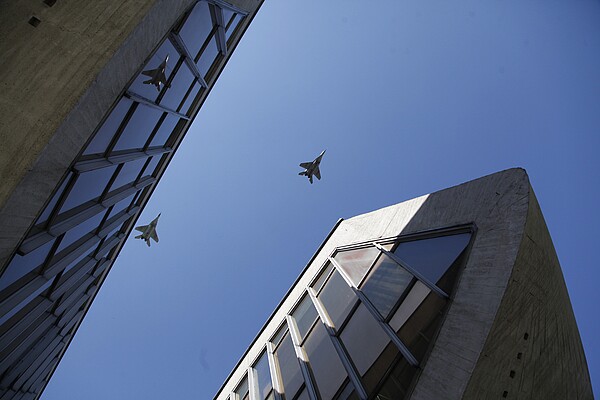
The anti-fascist Slovak National Uprising in 1944 is generally considered one the most important events in modern Slovak history. This article focuses on the Uprising’s 2004 and 2014 anniversary celebrations and examines various approaches taken in defining its legacy. The text demonstrates how the political agenda of the day has influenced this process. Furthermore, it focuses on reactions to revisionist attempts to interpret the legacy of the Uprising and how the events of 1944 have been used to legitimize a new wave of nationalism.
Since the end of the Second Word War, the Slovak national uprising (SNU) has been considered one of the most significant events in Slovak history, both by dominant Slovak political and intellectual elites as well as by the majority of the general public. The historical, ideological and political interpretations of this event in the latter half of the twentieth century played a critical role in the development of a Slovak politics of history.[1] As a result, the Uprising and its legacy became embroiled in ideological, political and scholarly discussions that are ongoing today.
The anti-fascist insurrection that would come to be known as the Slovak National Uprising began on 29 August 1944, was a joint endeavour of the communist and civic platforms of the Slovak resistance movement. In the Central and Eastern European context, the SNU was one of a number of attempts to change sides and overthrow collaborationist regimes vis-à-vis advancing Soviet troops. All these events (the Warsaw Uprising, the Coup in Romania, Horthy's efforts to conclude a separate peace in Hungary) likewise occurred in the same time span, between August and October 1944. Only the Romanian case can be considered successful; all the others were crushed by the German forces.
After the Warsaw Uprising (1 August–2 October 1944), the Slovak insurrection was the most massive anti-Nazi uprising in the Central Europe. Its primary military goal was to facilitate the Red Army's advance into Slovak territory. On the political level, the leading body of the Uprising, the Slovak National Council (SNC), endorsed the renewal of the Czechoslovak republic[2], which had been dismantled under German political and military pressure in March 1939. In this sense, the resistance movement was directed against the existing Slovak republic, which had been established on 14 March 1939 as a client state of Nazi Germany under direct supervision of Adolf Hitler.[3] The insurrectionists regarded the representatives of the Slovak authoritarian regime[4] as Nazi collaborators who were to be punished together with their 'German masters'.
The Uprising failed, however, to reach its military goals. Due to a Wehrmacht counteroffensive, the insurrectionists were unable to make contact with the Red Army. Roughly 80 000 resistance fighters[5] were surrounded in central Slovakia and eventually defeated after two months of fighting, when on 27 October 1944[6] German troops took the city of Banská Bystrica, the centre of the Uprising. Guerilla warfare continued until Slovakia was liberated on 4 March 1945.
The military operations during the Uprising together with subsequent atrocities committed by German forces and Slovak paramilitary troops loyal to the government resulted in the devastation of Slovak territory, which until then had been spared destruction. Regardless of the absence of a military success, however, the mere existence of the SNU had positive effects on post-war Slovak development. The Allies perceived Slovakia to be part of the anti-Hitler coalition. This meant that the Red Army acknowledged it as an ally, not as an occupied territory.[7] The Czechoslovak exile government in London also had to change its stance towards the Slovaks. Prior to the Uprising, President Beneš had generally dismissed Slovaks as collaborators and was planning to put Slovakia under some sort of military rule once the war ended. After August 1944, however, such plans needed to be radically revised. The exile government had to acknowledge the SNC as the leading political body of the Slovak nation and to deal with the demands of Slovak representatives regarding relations between Czechs and Slovaks in the future Czechoslovak state.
Over the last seventy years, the Slovak National Uprising has come to be understood along three main lines of interpretation:
1. The communist interpretation. This was the only officially permitted narrative of the SNU under the Czechoslovak socialist dictatorship (1948–1989), framing it not only as an anti-fascist insurgence, but as a socialist revolution organized entirely by communists. In this version, the fight against Nazism was identical with the class struggle against the bourgeoisie and reactionary Catholic clergy. In the late 1960s this official narrative provided with a strong national aspect, stressing the federalization of Czechoslovakia as a crucial component of the Uprising's political program.
2. The revisionist interpretation. This narrative is rooted in the downfall of the Slovak state at the end of the war. A group of its former officials went to exile (mainly to Canada and the USA), and there they formulated their own narrative about the Uprising. In this story the universal response to the ‘Slovak question’ was/is an independent Slovak state, irrespective of its regime. According to these nationalist exiles, the Uprising was a coup d’état organized by communists, Jews and 'pro-Czech protestants' against the state, its legitimate leaders, and the nation as a whole. It resulted in renewed Czech dominance over Slovakia and 40 years of communist oppression. According to the revisionists, the post-1993 Slovak republic is the heir of the wartime Slovak state and as such should adopt some of its traits, such as the rejection of 'Western liberalism', the leading role of Catholicism, and Slovak nationalism as state doctrine. At the beginning of the post-communist era, representatives of the former nationalist exiles and their domestic supporters struggled to push their narrative through as the official interpretation of Slovak history. The attempt was unsuccessful, but it nevertheless became the basis for the revisionist narrative advocated by small but loud far-right and nationalist groups.
3. The civic liberal interpretation. Here, the SNU is perceived as an integral part of the European anti-fascist struggle and as proof that the majority of Slovak society was prepared to fight Nazism. This legacy of the Uprising is a democratic one and as such provides the basis for the liberal democratic development of the present-day Slovak Republic. In 1992 the Slovak National Council[8] declared 29 August a public holiday in Slovakia.
Since 1990, the generally accepted, official view of the SNU has been based on this interpretation. It is presented thus in school textbooks and reproduced by political and cultural elites during annual celebrations. Its main guardian and interpreter is the Museum of the SNU in Banská Bystrica.
Over the past 25 years, no leading politician has dared to contest this understanding of the SNU as the most important and positive event in modern Slovak history, evidence of the country's anti-fascist, anti-authoritarian and democratic traditions. Revisionist attempts continue to be labeled as extremist deviations that have no place in Slovak society. Post-communist development, however, shows that alongside these generally accepted 'axioms' about the SNU's legacy, there is still enough space for its political instrumentalization and utilization for a variety of political purposes.
During the SNU's sixtieth anniversary celebrations in Banská Bystrica on 29 August 2004, Prime Minister Mikuláš Dzurinda described the historical and political legacy of the Uprising according to five main assertions: [9]
1. Slovaks can be proud that their history is not vile and cowardly;
2. The SNU is an example of the moral imperative not to be afraid to fight against evil;
3. After the fall of communism, "historical truth took its rightful place";
4. Although the Uprising was not victorious, it was liberating. The Slovaks thus freed themselves from the yoke of collaboration and took responsibility for their destiny.
5. Slovaks ought to remember, but also to forgive and to feel no hatred towards the descendants of those who committed atrocities.
It is obvious that the majority of these points present the legacy of the SNU in terms of a European politics of history. This view, which is the preferred one among rightist-liberal and pro-Western political elites, was meant to highlight the democratic, European and civic traditions in Slovak history. It was one way to establish distance from the country's development in the 1990s, when actions by the nationalist-populist ruling coalition under Vladimír Mečiar had disqualified Slovakia in the eyes of the West and stalled its admission into the EU and NATO.
During that time, critical voices among European diplomats and politicians had drawn attention to theMečiar government's charity towards, and even open support for, revisionist interpretations of Slovakia's World War II history. However, the election victory of a pro-Western coalition in 1998 and again in 2002 brought about a radical and very successful transformation. In the course of a few years, Slovakia became an 'economic miracle' and the most pro-European country in the region. Celebrations of the sixtieth anniversary of the SNU in 2004 took place during this era of an overall optimism. Slovakia had joined the EU only four months earlier, and Euro-optimism was at its peak; the nationalists and populists were (at least temporarily) marginalized; and a general consensus about the liberal-democratic, pro-Western orientation of the state seemed to have been achieved, together with a bright future for the country.
Ten years on, the situation is very different. The optimism is largely gone as well as the overall consensus about the country's future course, whether political or economic. These changes are connected with both external circumstances (the global economic crisis, new international conflicts) and internal conditions (changes following the 2006 election). As a result, the preparation and celebration of the seventieth anniversary of SNU in 2014 saw many more conflicts and controversies than the previous ones had.
Since the 2006 elections, the Social Democratic party (SMER) has become a dominant political force. The new government introduced its own approach to the politics of history, which is called 'reasonable historicism' and involves 'education towards patriotism'. As Prime Minister Robert Fico has demonstrated on many occasions, a key trait of this policy is the intensive political instrumentalization of the past in the form of legitimizing his own current political goals with (pseudo-)historical argumentation. The legacy of the SNU has been one victim of this policy. This can be illustrated by his speech during the Uprising's 2007 anniversary celebration, which he utilized to attack his opponents. Fico highlighted how the Uprising had united people across the political spectrum in the fight for a common goal, and he pointed to globalization, neoliberalism and privatization as new threats that once again demanded solidarity and courage. In the same speech, however, he suggested that his own endeavours in this regard were being constantly undermined by journalists and the media, and that they were deliberately polarizing the Slovak society.[10] Fico's tactics of tailoring the SNU legacy to his own current political interests, then using it to attack his opponents, was again evident during the 2014 celebration of the Uprising.
The most visible topic of the 2014 SNU celebration was the conflict in Ukraine and especially the EU sanctions against Russia. Since 2006, the Slovak Social Democrats have demonstrated their sympathies towards Russia, with Robert Fico repeatedly stressing Russia's position as a strategic economic partner for Slovakia. His evident Russophilia was behind his only very reluctant acceptance of the EU's official stance during the crisis in Ukraine. The SNU celebrations were thus a welcome opportunity to demonstrate openly his disagreement with Western policy and his sympathies towards Russia. In cooperation with his political ally, President Ivan Gašparovič, Fico utilized the fact that due to the Soviet Union's role in liberating Slovakia there exists a long-standing tradition (since 1945) of Russian presence at SNU celebrations. In 2014, President Gašparovič directly invited Russian president Vladimir Putin (as well as Ukrainian, Czech and Polish presidents). This happened after the Russian annexation of Crimea and furthermore by a president who was already leaving office. It is highly probable that he acted in accord with Fico and that Fico did not want to wait to ask the incoming president, Andrej Kiska[11], whose critical stance towards Russia was widely known.
However, inviting Putin led to unpleasant domestic and international problems. A significant number of Slovak intellectuals, journalists and representatives of the opposition protested. They argued that his presence would be an offence to all those who had died fighting for freedom.[12] By contrast, Slovak Minister of Foreign Affairs Miroslav Lajčák argued that the official Russian presence would in no way cause international problems as it was a simple recognition of the Russian (Soviet) contribution to the liberation of Slovakia from Nazism.[13]
On an intellectual level, the core of the discussion lay in the difference in perceptions of relations between present and past. One side argued that "history is apolitical" and that the positive Russian role in the SNU had to be acknowledged regardless of the present situation. Critics of this argument stressed that history is indeed very political and that the invitation to Putin clearly revealed the pro-Russian mindset of the Slovak political representation. Finally, after days of uncertainty, Putin announced that he would not attend the ceremonies and sent Russian Minister of Defense Sergey Shoigu as his envoy.
The problem was that even the mere presence of the Russian government at the celebration was not taken well by other foreign guests. It is not sure to what extent it influenced Ukrainian president Petro Poroshenko’s decision not to attend, which was explained officially by the hectic situation in his country. The Polish president, on the other hand, made a very clear gesture in this regard. Bronisław Komorowski announced a last-minute change in his programme and skipped the official part of the celebrations, thus avoiding meeting Shoigu. He joined the Slovak and Czech presidents only after the departure of the Russian minister. The Polish and Ukrainian side made their position even clearer when they denied Shoigu's plane overflight because it had designated itself as military rather than civilian.[14] It had to return to Slovakia and wait for a Polish permit to enter its airspace.
The second topic closely connected with the Slovak National Uprising's seventieth anniversary celebration was the sanctions imposed on Russia by the USA and the EU. Although Slovakia accepted the official EU position on Russia, Prime Minister Fico openly and repeatedly stated his profound disagreement with "pointless and counterproductive" sanctions. Of course, he was not the only leading European politician to hold such an opinion. It was, however, still strange that his disagreement with the sanctions played a central role in all his public appearances during the 2014 SNU celebrations. It soon became very apparent that in Fico's speeches the passionate anti-sanction rhetoric completely overshadowed the topic of the Uprising and its legacy.
During his 2014 SNU tour, Fico attended four gatherings in various locations connected with the fighting and Nazi atrocities before delivering his main speech at the official celebration in Banská Bystrica. On one of his stops he complained that people were incapable of taking a lesson even from the most tragic events: "I do not understand, and I will never understand, this senseless war of sanctions that we are waging, whether it is the EU, the Russian federation or other countries."[15]
At another event, in a village destroyed by Nazis in retribution for the SNU, he used harsher language, stating that Europe had not learned from the two world wars and is "still looking for purported enemies". He stressed that the sanctions were pointless and damaging for all of Europe. In addition, he made references to "someone who is enjoying the whole situation" because "it suited his plans."[16] It was not hard for the targeted audience to comprehend (and to express their appreciation with applause) that the thus-mentioned "someone" was the USA. However, there were also critical voices that asked if homage to the victims of Nazi mass murders was really the best place for spreading conspiracy theories.
During his speech at the main celebrations in Banská Bystrica, Fico repeated his previous arguments regarding EU policy towards Russia and declared that Slovakia would not subject its foreign policy to the "disinformation and propaganda coming from other countries". According to the prime minister, the lesson Europe ought to take from the events that had happened seventy years earlier was that actions that lead to international tensions or economic damages are unproductive and that emerging conflicts be solved by diplomacy.[17]
These statements, however, clearly contradicted the ideas put forth by President Kiska. In his speech, Kiska praised the courage of those who chose to fight "evil and its ideology", even if they "surely asked themselves about the meaning of the armed insurrection: wouldn't it be better to wait till events unfolded; wouldn't it be better to stay at home; isn't it just a false, pointless heroism, are the economic losses (sic!) worth it?"[18] Kiska concluded: "Seventy years ago, people manifested self-consciousness, valor, refused caution and the philosophy that it is possible to get out of everything without sacrifice. It would be dishonorable and insincere to remember the Uprising and its victims and not to think of this legacy."[19] It became clear that the president and his advisers had deliberately decided to offer an alternative to Prime Minister Fico's world view. These blatant differences between the two statesmen regarding the legacy of the "most important event in Slovak history" did not go unnoticed.[20] However, the critical voices were directed mainly at Robert Fico and his political instrumentalization of the Uprising. Not only his long-term critics but also leftist media felt that some of his attempts to associate his version of the SNU's legacy with the current situation in Slovakia and Europe were forced and reductive, to say the least.
The most frightening controversy accompanying the seventieth anniversary of the SNU is connected with the growth of the so-called new nationalism. This movement defies the values of liberal democracy, and its sympathies for the authoritarian and xenophobic traits of fascism are accompanied by strong revisionist tendencies. "It is precisely this aspect that makes the current debate on the 1944 Uprising so magically attractive"[21] to the Slovak nationalist far-right.
The revisionist interpretation of history became the ideological base for various extremist movements. They have been gaining popularity as a result of economic crisis, rising anti-Roma sentiments and growing distrust towards traditional, mainstream political parties. In 2013, Marián Kotleba, leader of a neo-fascist party, shockingly won the gubernatorial election in the Banská Bystrica Region, a former centre of the Uprising. Among other things, his success significantly complicated the organization of 2014 SNU celebration. It was hardly imaginable that a governor who openly glorified the Slovak puppet state and labelled the Uprising a Bolshevik coup d'état could act as a host of the event together with the director of the Museum of SNU, Stanislav Mičev. Although diplomatic protocol demanded his presence, after the protests of Mičev, invited foreign ambassadors and other official guests, Kotleba was allowed to attend only as a private person.[22] Despite his initial statement about joining the event, he remained in his office in the centre of Banská Bystrica. There, across the windows, he had hung a banner with the slogan "Stop NATO! Yankees go home!"[23]
Although the fact that Banská Bystica now had a neo-fascist Governor was by far the most controversial point of the 2014 SNU celebrations, the nationalist far-right stirred public life with one more provocation in the form of a website devoted to the "real image of the SNU". The website's visitors are greeted with a banner saying "The Uprising is Death" and crossed-out images of a Czech Lion, a Star of David and the communist hammer and sickle –symbols of the alleged leading groups in the Uprising, which thus represented everything that was "un-Slovak".[24] The rest of the rather amateurish website offers stereotypical revisionist and blatantly distorted interpretations of events in the years 1939–1945, including uncritical defenses of the Slovak state and its representatives, condemnations of the SNU and reports of crimes committed by partisans (who are branded Judeo-Bolshevik murderers). The texts are based on publications by well-known revisionist historians.
This was neither the first nor the only revisionist page; but its presence among the general public grew so strong that an official reaction became necessary. This was provided by the directors of the Historical Institute of Slovak Academy of Sciences, the Institute of Military History and the Museum of the SNU. In their joint declaration, they condemned the revisionist website and suggested that its founders were interested less in engaging in the discussion of history than in rehabilitating the Slovak state and its leading officials, who had been convicted of collaboration with the Nazis. The statement presented the SNU as one of the official symbols of the Slovak republic and equated its denunciation with defamations of the state flag or the national anthem. The three directors also complained that the seventieth anniversary of the SNU had provided an opportunity "for the presentation of ideological and political endeavors that in a crude and primitive way are deforming one of the most significant events of Slovak modern history." The joint resolution straightforwardly stated that these revisionist attempts deserved condemnation, not discussion.[25]
This strict rejection of revisionism from the "big shots" of Slovak historiography was, however, almost immediately called into question by the activities of state television. For the seventieth anniversary of the SNU, Slovak public broadband television prepared a documentary based on a book written by historian Martin Lacko, who is well known for his apologetic stance towards the Slovak state and critical approach regarding the "legacy of the SNU". In addition, he was one of the historians whom the creators of the aforementioned revisionist website officially thanked for their cooperation.
Despite being condemned unanimously by historians who reviewed the documentary before and after its broadcast (they considered it to be pure propaganda),[26] it was premiered during prime time. Unsurprisingly the film was very well received by various far-right, anti-Semitic and revisionist internet portals, which took is as evidence that their views on history were becoming more mainstream. According to the official statement of the Ministry of Culture, in airing the documentary public television was merely contributing to a plurality of views.[27]
The story around the SNU documentary reveals ambivalent attitudes towards modern Slovak history among the current political elite, who nevertheless claim to adhere to European social democratic traditions. It relates to a still-unsolved conflict regarding the preference for national or civic values in everyday politics. In other words, while the Slovak social democrats pompously celebrate the anti-fascist SNU, they magnanimously ignore and quietly accept nationalist and revisionist outbursts even among their leading members. This sometimes leads to rather absurd situations. In 2007, Fico declared that he would "not tolerate any questioning of the SNU's significance,"[28] but three years later he remained silent when a member of his party, the mayor of the small city of Rajec, decided to unveil a bust of the 'Slovak patriot' Ferdinand Ďurčanský, who had in fact been a staunch anti-Semite and the first foreign minister of the Slovak state under the Nazis.
In conclusion, we can say that the seventieth anniversary of the Slovak National Uprising has evidently brought about many more controversies and problematic events than anyone could have predicted. However, these were not caused by bad luck or unforeseeable circumstances. On the contrary, the reasons for all of these problems have existed for a long time. Their common denominator is the political instrumentalization of the past, which is seen only as a means for legitimizing the world view of the ruling powers. However, this sort of opportunistic juggling with interpretations of the anti-fascist struggle naturally undermines the importance and relevance of the SNU's legacy among the general public. This situation in turn encourages the much the more dangerous revisionist positions of extremist and neo-fascist groups. In the words of one Slovak historian dealing with the history of remembrance: "Thus the Uprising has once again served the political agenda of the day."[29]
Adam Hudek: The Unlucky Seven. Too Many Controversies Around the Celebration of the Seventieth Anniversary of the Slovak National Uprising in August 2014. In: Cultures of History Forum (12.04.2015), DOI: 10.25626/0039.
Copyright (c) 2015 by Imre Kertész Kolleg, all rights reserved. This work may be copied and redistributed for non-commercial, educational purposes, if permission is granted by the copyright holders. For permission please contact the editors.
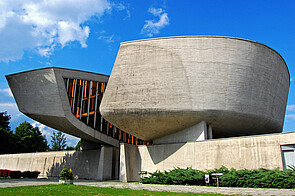

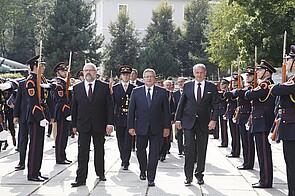
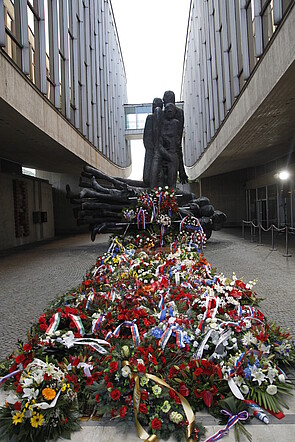
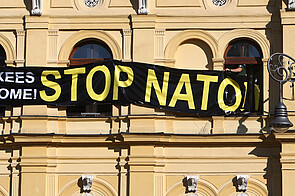
James Krapfl and Andrew Kloiber · 28.05.2020
The Revolution Continues: Memories of 1989 and the Defence of Democracy in Germany, the Czech Republ...
Read more
Monika Vrzgulová · 16.05.2019
Only a Beginning: The Sered' Holocaust Museum in Slovakia
Read more
Get this article as PDF download (including pictures).